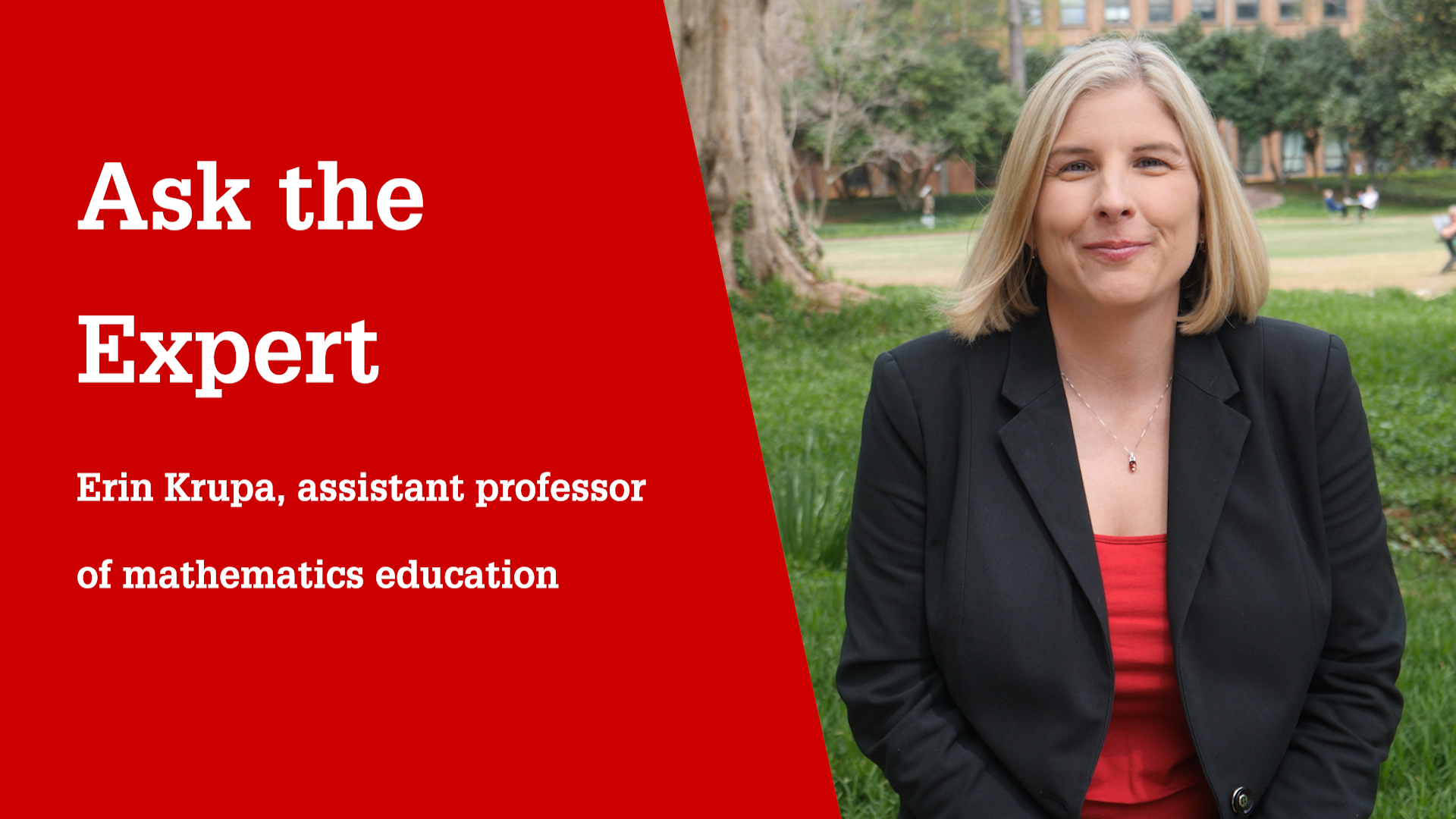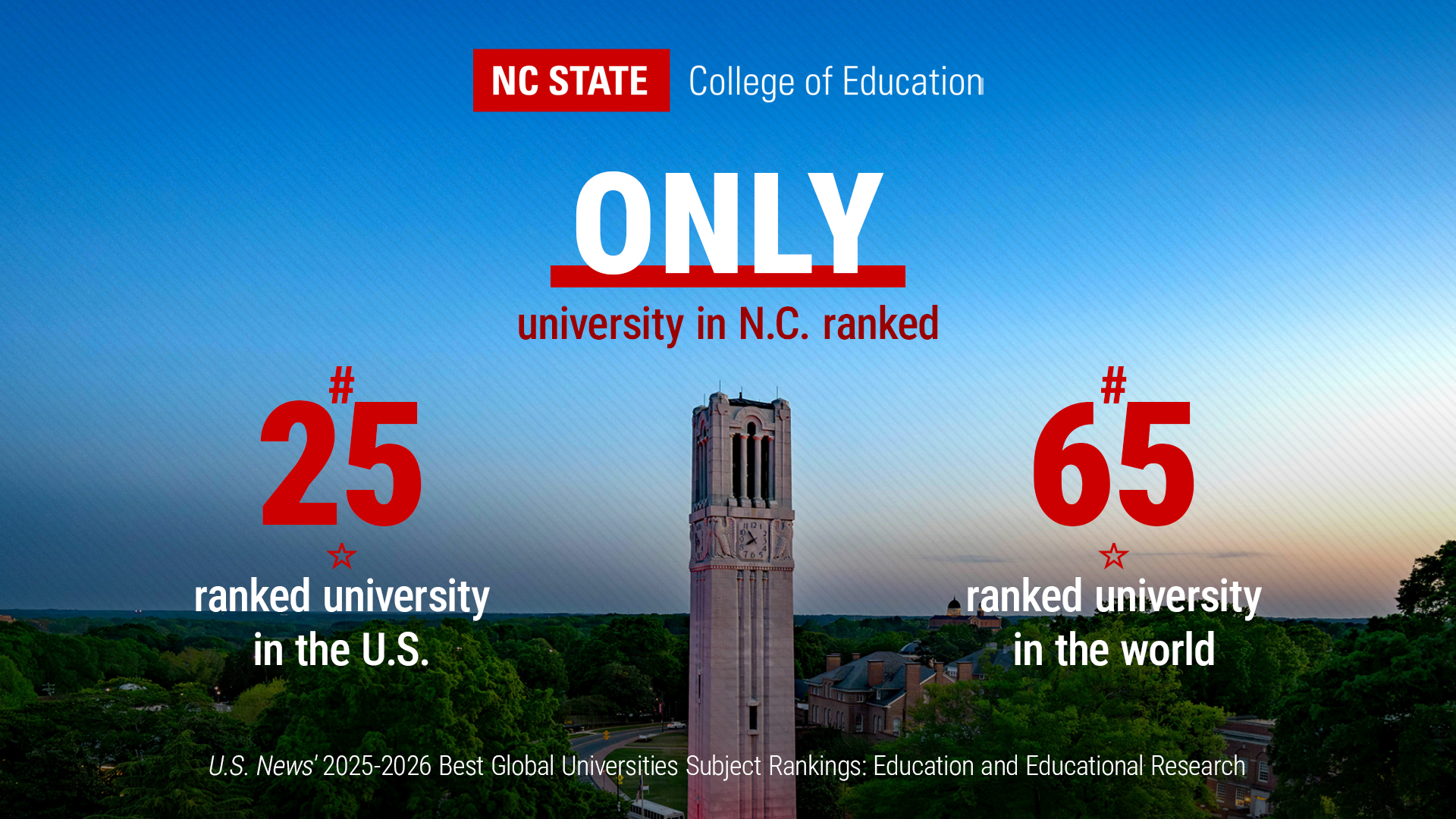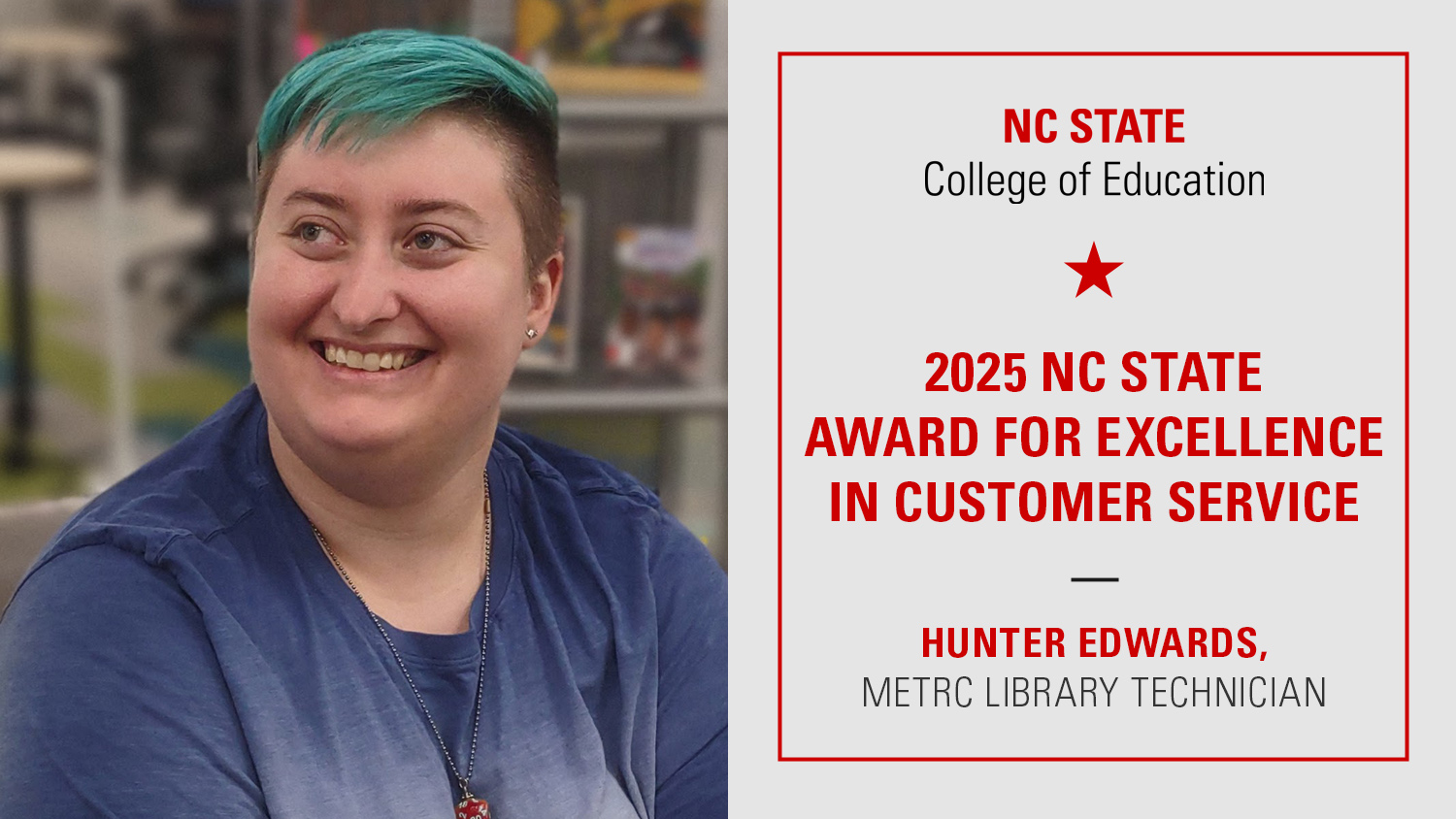How Can Innovative Ways of Teaching Help Students Better Understand Math? ‘More Students Get Involved When They’re Asked to Be Central to the Learning Environment,’ Says Assistant Professor Erin Krupa
Shifting away from traditional ways of teaching mathematics and introducing innovative and unconventional curricula into the classroom can help students become more engaged and better able to learn to do math, says NC State College of Education Assistant Professor Erin Krupa.
Krupa’s research focuses on improving the quality of mathematics teaching and learning and making math more equitable through innovative curricular materials. She said innovative methods of teaching math are important because they can better help students make connections between concepts and help them develop ideas for themselves.
“I think that we know that traditional ways of math don’t engage all kids and standing at the board, hearing a teacher and taking notes doesn’t really engage students,” Krupa said. “More students get involved when they’re asked to be central to the learning environment and get to do activities that engage them in the process. It makes them feel like valued learners in the community.”
Part of introducing innovative curricula into the classroom, Krupa said, means putting the learning on the students by having them conduct investigations that allow them to discover key mathematical concepts.
For example, when teaching geometry lessons, Krupa likes to have students fold square pieces of paper and make inferences about what is happening, mathematically, with the resulting triangles through the act of folding. From there, the students are able to develop conjectures and complete a formal proof.
“Through investigation, they discover some key mathematical concepts and then they’re more apt to remember it, because they figured it out for themselves,” Krupa said. “Just that short bit of investigating for themselves helps them come up with new learning.”
Connecting Math to the Real World
Using more than $7 million in external grant funding, Krupa’s research is exploring various innovative curricula that could be implemented in mathematics classrooms.
For example, her “Using Animated Contrasting Cases to Improve Procedural and Conceptual Knowledge in Geometry” project is developing animated, digital materials intended to highlight different geometric features and help students better understand the theory behind the mathematics concepts they are learning.
Her most recent project, “Design and Pitch Challenges in STEM: Merging Entrepreneurship and Mathematics Learning,” is developing nine design challenges rooted in the high school mathematics curriculum that will encourage students to build, test and refine prototype STEM products, design business plans to demonstrate product viability and pitch their products to a panel of judges. The project is based upon one led by Professor Emeritus of Mathematics Education Jere Confrey, Ph.D..
By engaging students in unconventional activities such as entrepreneurial pitch competitions, educators can connect mathematics to real-world applications that make the lessons meaningful and relevant for students.
“It ties to students’ interests in their communities and in their world. They’re designing solutions to solve pressing problems that kids care about and, along the way, they’re picking up math,” Krupa said. “It helps them connect math to other STEM topics, but also just to solving problems in the world.”
Using Innovative Lessons to Make Math Accessible for All
Teachers who want to engage students in innovative ways of learning math, Krupa said, could borrow from the Design and Pitch competitions on a smaller scale by bringing in tasks or problems that are based in a real-world context.
By doing this, students are able to see math as a tool to solve problems that are interesting to them as they develop a motivation to remember and want to use the mathematics skills they’re learning.
Developing these skills, Krupa said, is important not just for students who want to pursue STEM careers but for everybody, as these abilities are valuable and applicable even in occupations that are not traditionally classified as STEM jobs.
For example, Krupa said she has seen fashion designers apply STEM skills to use LED technology to design dresses and pottery makers use chemistry and mathematics to guide their art.
“Oftentimes, math is one of those benchmarks you need that opens the gates for all the other courses. It’s important that all students feel like they’re capable, and there’s not some barrier to that success. It’s about not closing off pathways for students just because of a subject,” Krupa said. “My goal is to just make math more fun and engaging so that when you get to a place in your career, whatever your discipline, you can find the value and use in math.”
As teachers work to bring new and innovative lessons into their classrooms, however, Krupa said they will need to be patient. Making these changes can take time and results are not always immediately apparent.
To bring students on board with the changes, Krupa also suggests that educators share their motivations for using innovative curricula.
“I think it’s important that you have to establish new norms in your class in the beginning and you can’t give up,” she said. “Talk to students about why you’re doing this, that you value their opinions and care about how they think and learn about math and want to make that easier and more accessible.”
- Categories:



